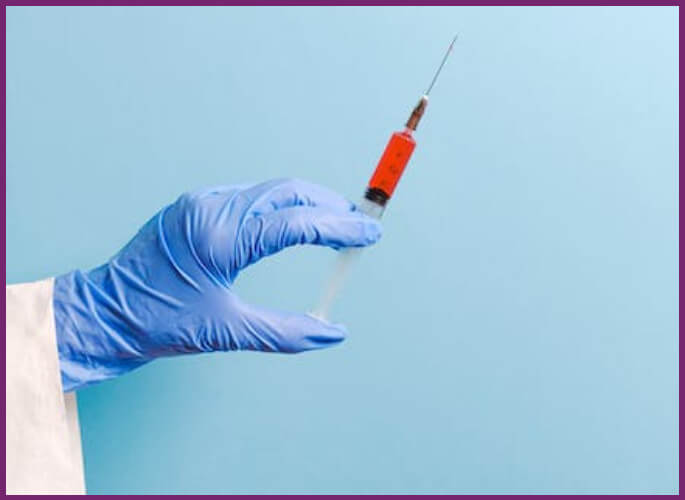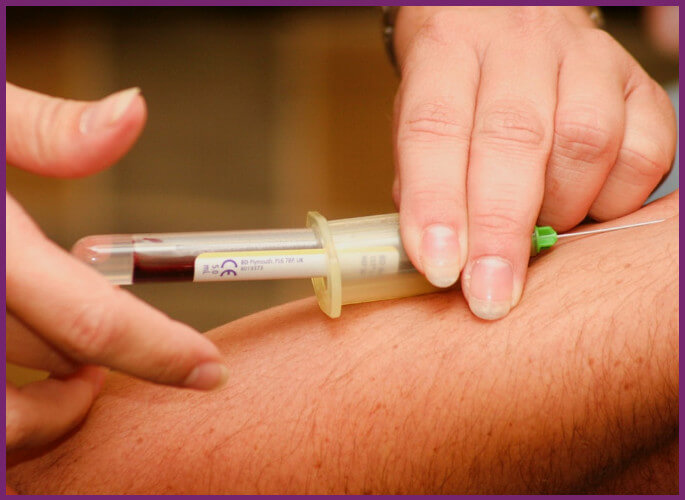Is there a difference between an STI and an STD?
If you get an STI test, should you also get an STD test?
Let’s clear things up quickly (and I hope the same goes for any infection you may have encountered).
STD stands for sexually transmitted disease, and STI stands for sexually transmitted infection.
The CDC doesn’t distinguish between STDs and STIs, and neither does Planned Parenthood. Both are “infections that get passed from one person to another during sex.”
So, there is no difference between STDs and STIs when we talk about them (even if the words have slightly different meanings—more on that in a minute). They are two names for the same set of infections.
But many people are unsure about whether to say STD or STI. And others are even more unsure about how to prevent one or what to do if they think they have one.
So, understanding that STD and STI mean the same thing doesn’t let you off the hook. You’ve still got to understand what these infections entail and how to communicate about them.
STDs/STIs can affect anyone, and they can cause serious discomfort (sometimes lasting your entire life).
Take a gander at the following article to understand a bit more about the difference between STDs and STIs, how to get tested, and how to prevent them.

What You Should Say: STD or STI?
The correct term for an infection that’s passed to you via sex is a sexually transmitted infection (STI).
You can still use STD—everyone knows what it means. But it’s not the official term anymore.
Regardless of what you want to call them, you should always feel comfortable about talking about STDs/STIs with your doctor and your partners.
This is actually why the medical community prefers to use STIs today.
Terms like STD and venereal disease tend to make people feel like they’ve done something horrible and now need to go live in a leper colony.
STI is more accurate—and less scary.
While STIs are kind of scary, the key to keeping them away is normalizing discussion about them.
Infection vs. Disease
STI and STD are interchangeable in casual convos, and some medical professionals don’t bother to distinguish between the terms STD and STI either.
But there is a distinct difference between them that some professionals make.
Technically, STDs begin as STIs.
Infection is the initial stage when pathogens enter the body. In this stage, you are infected, but you don’t yet have a disease because the agent hasn’t caused your body to malfunction.
The meaning of “disease” is trickier to define for scientists and medical researchers. But it’s essentially an illness that causes your body to be dysfunctional.
So, once you start to feel symptoms of an STI (or the STI begins to impact your body negatively, even if you don’t have noticeable symptoms), it becomes an STD.
Basically, a disease is a later stage of infection, and many infections never develop into diseases.
For instance, HIV sometimes doesn't reach its third stage of infection, known as AIDS.
But this isn't always the case, so it wouldn't be wise to rely on luck when you're aware of an infection.
And to be clear, you can still pass an infection to someone else even if it hasn’t manifested as a disease. So, always wear protection during sex, even if you don’t have any symptoms of an STI.
The Difference in Stigma: STIs vs STDs
While there isn’t a difference between saying STD and STI, there is a difference in stigma.
This means there’s a difference in how people think and feel about them. There’s also a difference in how people treat one another when they find out someone has an STI or STD.
This is one reason why the medical community stopped using STDs and now uses STIs.
Here are a couple of reasons why you should say STI instead of STD:
👉 STI carries a less negative connotation/perception than STD or venereal disease. We don’t want people to feel scared of these types of infections, or they will be less likely to get tested.
STIs should be seen as medical conditions and sexually active people should feel comfortable when seeking information and treatment.
👉 The term STI is less likely to make people feel ashamed of getting an infection. Patients and the general public need to be more open to talking about STIs.
People who feel ashamed don’t get tested and are more likely to live in denial while an infection gets worse and spreads. STIs are medical conditions—not moral ones.
In the opinion of the medical community, the word “infection” feels much lighter than “disease.” Sure, neither one is a particularly fun word.
But if you’re having a conversation about sex with a partner, using STI might make them feel more comfortable.

How STIs Spread
Here’s the thing about infections and diseases: Infections get passed around—they spread from person to person. That’s not the case with all diseases (such as diabetes).
So how do STIs spread?
STIs are contracted through sexual contact/sexual activities, such as:
👉 Vaginal sex
👉 Oral sex
👉 Anal sex
But they can also spread through non-sexual activities, including:
👉 During pregnancy
👉 Childbirth
👉 Breastfeeding
👉 Sharing needles
👉 Blood transfusions
If your blood or genitals come into contact with an STI-causing virus or bacteria, you can become infected even without having sex. However, this is very rare.
A few STIs, like herpes and HPV (genital warts), can spread via skin-to-skin contact.
This usually happens during sex because the infected area is on the genitals or anus, but sex is not required to spread the infection.
Yes, it’s a bit scary. But these STIs are not very likely to spread if the infected person isn’t currently having an outbreak.
And wearing condoms can drastically reduce the chances of spreading infection.
What Are the Symptoms of STIs?
STIs can be very elusive because they don’t often manifest symptoms.
This makes it hard to tell whether you have an infection or not.
You can feel totally normal even as your body is being hurt by an infection.
Even worse, you can pass this infection on easily when you aren’t aware of it. This is why it’s so important to get tested.
Some STIs will make their presence known. But even then, you might have to pay attention in order to feel or see the symptoms.
This next part may be a bit gross, but it’s totally necessary. You’ll want to know what to look for when examining yourself for possible symptoms.
Symptoms of STIs can include the following (they usually appear on or around the genitals or anus):
👉 Warts
👉 Blisters
👉 Sores
👉 Lumps
👉 Constant itchiness
👉 A rash
👉 Unusual skin growth
👉 Unusual discharge
👉 Pain when peeing
Some less-than-common symptoms include unusual vaginal bleeding, abdominal pain, fever, and warts around the mouth and throat.
Don’t be afraid to inspect your naughty bits for anything unusual, especially if you feel uncomfortable down there.
If you see or feel anything that lasts longer than a day, see a doctor ASAP. Infections can wreak havoc down there if you don’t take care of them.
Getting Tested
You might be the most careful person in the world when it comes to safe sex. You might wear regular condoms or finger condoms or even plaster your partner in dental dams.
But you STILL need to get tested regularly.
The only people who don’t need to get tested are people in long-term monogamous relationships (who had been tested at the start of that relationship) and people who have not had sex since their last test.
Why?
Because many people with STIs show no symptoms or signs of infection. In fact, you’re more likely NOT to have symptoms than to have them!
This means you can have an STI and pass an STI to someone else without ever having a clue.
So, GET TESTED.
If any of the following risk factors apply to you, get tested immediately:
👉 You’ve had unprotected sex
👉 You have been forced to engage in sexual activity
👉 You’ve injected drugs
For everyone else, it’s best to get tested every 6 months to a year.
If you have many sexual partners (even if you use protection), it’s best to get tested every 6 months.

How to get tested
You’ve got to make a bit of effort to get tested. It normally involves making an appointment with a medical center. Don’t worry; many STI tests are free or very affordable.
One option is to see a general practitioner. Your local physician usually fits the bill.
Another option is going to a sexual health clinic. You can often show up without an appointment. And there are a lot of perks to stopping in:
👉 The doctors and nurses will make you feel comfortable and treat your situation with discretion.
👉 They’ll ask you about your sex life and give you their advice. Then, they’ll let you know what kind of tests you need to take.
👉 You’ll probably get some free swag, like free condoms and dental dams.
If you test positive, don’t worry just yet. Most STIs go away after a round of medication. Whoever tested you will provide a prescription.
Unfortunately, you’ll have to make some phone calls to your previous sexual partner(s) to let them know to get tested too. It’s not fun, but it’s the right thing to do.
How to Prevent STIs/STDs
If you have sex with more than one partner, you are going to encounter infected people during your life. It’s a certainty.
But that doesn’t mean you will become infected. There are some ways to greatly reduce the risk of contracting and spreading STDs/STIs.
👉 CONDOMS: Condoms are the king of STI prevention. They are the best way to stop the spread of most STIs—plus, they nip those unwanted pregnancies in the bud too. However, you have to use them correctly to achieve maximum protection. Learn how here.
👉 Use lube: Lube is super important during sex. It makes it easier to have sex with a condom and reduces the chances of the condom breaking or coming off. It also prevents uncomfortable friction that can cause micro-tears on your genitals. These tiny open wounds increase your chances of spreading or getting an infection.
👉 Getting vaccines for HPV, hepatitis A, and hepatitis B: Some STIs can be prevented with a simple vaccine. A lifetime of discomfort or a simple injection? There’s no reason EVERYONE shouldn’t be getting these shots.
👉 Taking appropriate medication for incurable STIs: Some STIs can’t be cured, such as herpes or HIV. But taking regular medication can help to prevent discomfort and reduce the likelihood of spreading the infection to others.

The Most Important Thing to Understand about STIs and STDs
WEAR CONDOMS.
Or, insist that your partner wears a condom. Condoms protect against STI transmission with 98% effectiveness.
Seriously, if you’re sexually active, you should be using condoms every time. It’s the safest and most reliable form of STI risk reduction.
The good news is there are plenty of places to get free condoms, from sexual health clinics to right here at Condomania.
But what if you absolutely hate wearing them? Most likely, you haven’t found the right condom for you. Here’s a quick guide to finding a condom you actually like wearing.
👉 Find a condom in your size: Condoms come in many sizes. Wearing the right size is the key to comfort, but it’s also important for safety. Wearing the wrong size reduces the effectiveness of the condom. Learn how to find your size here.
👉 If you can’t feel anything, try an ultra-thin condom: Many people hate condoms because they reduce sensation. But there are condoms out there that you can barely feel. SKYN Elite, Kimono MicroThin Plus Aqua Lube, and Unique Pull are a few crazy-thin options.
👉 If condoms cause irritation, try a non-latex condom: Many people who have latex allergies don’t know it because the effects can be mild. If your condom makes your skin feel weird, try a non-latex condom like SKYN or Trojan BareSkin Supra.
👉 If condoms break, you need a larger size: A broken condom is a tell-tale sign that you’re not wearing the right size. Try a large-size condom to fix the problem.
👉 If condoms slip off, you need a smaller size: Slippage and bunching sometimes mean that your condom is too big. A condom should fit snugly against your skin. If yours doesn’t, go for a snug size condom.
The key to finding the right condom for you is trying a bunch of them. That’s why we offer condom variety packs here at Condomania.
For the price of one box of condoms, you can try 12 or more different condoms in your size or style preference. It’s the easiest way to find a condom that offers maximum STI protection and optimal sensation.
Final Word on STIs vs. STDs
It’s important to understand the differences between sexually transmitted infections.
But there is no practical difference between STIs and STDs—when speaking about them with a doctor or partner, they mean the same thing.
So don’t worry about the terminology. Instead, focus on what’s really important—prevention. You don’t have to read a book or take a course to learn how to keep those infections away from your nether regions.
All you have to do is wear a condom. It really is that easy.
So, stock up on condoms now and enjoy sex without having to worry about getting sick.












